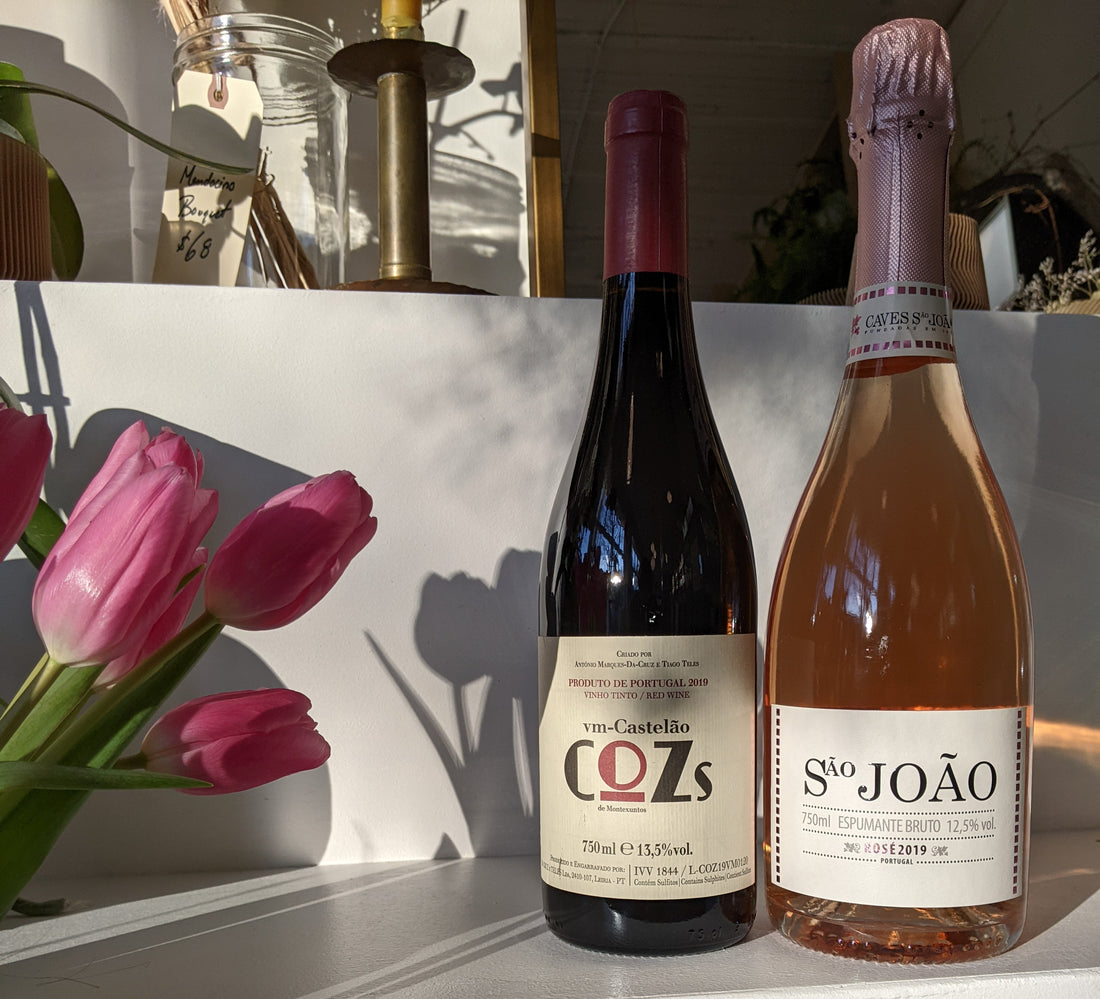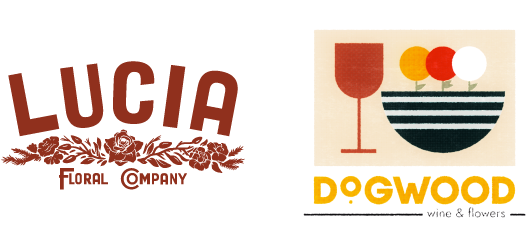
October 2021 - Central Portugal
October 2021
Central Portugal
Featuring:
Caves Sao João, Brut Rosado, Bairrada NV
COZs, vm-Castelão, Montejunto 2019
At a glance:
- Wide range of climates, grapes, and production methods
- There are over 250 (and counting) indigenous grape varieties. The ‘international varieties’ like Cab, Chard, & Pinot are rarely found
- Most growers (outside the Douro) are small and family owned
- Gen X and Millennials have been paramount in championing new winemaking styles, bringing freshness and verve to the table
- Maybe the last great frontier for finding value in European wines
When one first starts to study wine, they start in France. Then they’ll move through Europe to Italy and Germany, then finally to Spain. Before finishing Spain and moving to the New World, there’s usually a small footnote in the Spanish section mentioning Portugal. For years Portugal has gotten the little-sibling treatment to Spain, even though the wines and climates are remarkably different. Thankfully this is starting to change and, lucky us, we’re early enough to still catch some great values from this oft-overlooked land.
Portugal has a lot of good things in a small package. From the warm, dry Algarve in the deep south of the country, to the cool maritime climate of the Minho region in the north, the country is a wealth of different climates. The Atlantic Ocean acts as a cooling influence on the coastal parts of the country, while the mountains along the Spanish border are highly continental and arid. Then there’s the islands - Madeira and the Azores - with highly volcanic soils, near-tropical climates, and wines that are incredibly unique.
Moreover, there’s no other country that jams as many winemaking styles into as small an area as Portugal. Port and it’s lesser known cousin Madeira are the obvious ones in the Fortified category. Vinho Verde is the flagship crisp white. But there’s also a long history of sparkling, dry reds, round whites, and nearly everything else. And most of these put up against an equally-delicious wine from Spain, France, or Italy (much less the USA) would be half the price.
For the sake of this month’s conversation, we will only focus on dry wines of Portugal. Port and Madeira are great, but they’re an entirely different conversation focused around centralized ownership (thank the British) and highly specific winemaking styles really only found in these regions. (However, we did bring some into the store and are happy to chat about them there!)
In the wine club, we’ll be exploring the wines from Montejunto and Bairrada, two less-known regions north of Lisbon along the coast. Here we have two partnerships - young and old - producing top-notch sparkling and still wines that deliver remarkable value. At the pickup party, you can taste a slightly atypical Alvarinho from Vinho Verde and two more dry red wines - one young, one older - from the Douro region, where Port comes from. These are fantastic Winter wines, in my opinion. The toast, spice, and warm dried fruit are a surefire way to warm your soul.
Caves Sao João, Brut Rosado, Bairrada NV
Albano, José, and Manuel Costa founded their winery in 1920, naming it after S. Joao, the patron saint of Bairrada. This Carmelite monk was responsible for initiating the construction of the Bussaco Monastery in 1628. Initially, they set out to make Port wines, wanting to cash in on the boom in demand for Port. A 1930 ruling prohibited the bottling of Port wines outside of the Vila Nova de Gaia area, where the port shippers still conduct business today, and Caves S. Joao turned to the production of still wines from the Bairrada and Dão regions.
Later, realizing Bairrada’s potential for producing world-class white and sparkling wines, they hired the French winemaker Gaston Mainousson to spearhead Bairrada’s establishment as the preeminent region for sparkling wines in Portugal. With help from Mainousson, the brothers launched three brands: Caves S. Joao (which made wines from Bairrada and Dão), Frei Joao from Bairrada and Porta dos Cavaleiros from the Dão. Ultimately, these brands became ubiquitous in the Portuguese wine scene of the 20th century.
To draw a comparison to Champagne or even Cava would be remiss. This wine is intentionally made with freshness and vivacity - no long lees aging or old reserve wines added. The perfumed Touriga Nacional (40%) gives it a floral rose-petal and spice quality, while the Baga (60%) lends fresh red fruit and a crunchiness to the wine. Overall, you have a delicious, generously-fruited sparkler with a very active mousse (size / feel of bubbles) that’s perfect alone as an aperitif or with greasy/fatty foods.
Pairing - Charcuterie Board or even a Burger and Fries. Seriously.
COZs, vm-Castelão, Montejunto 2019
Da Cruz e Teles (aka COZs) is a partnership between two brilliant Portuguese vignerons/winemakers - Tiago Teles (Gilda, RAIZ) and Antonio Marques-da Cruz (Quinta da Serradinha).
The idea of working together started in 2015 when the duo approached the family of the late Jose Mendonça about working their vineyard in Figueira da Foz, a village north of Lisbon. This place was the main source of the grapes of Quinta dos Cozinheiros, a producer that became a reference point for the new generation of winemakers in Portugal. That project unfortunately came to an end with the tragic and untimely death of Mendonça, however the duo was determined to have the legacy of their colleague live on.
This vineyard, located just 5 miles from the Atlantic, proved ideal for the wines of Teles and Marques-da-Cruz, who decided to name their project after the original Cozinheiros. Spurred by the success of their first vineyard partnership, Tiago and Antonio purchased more vineyards in the Serra de Montejunto, a mountain range also in the region of Lisbon.
This wine comes from the grape Castelão, a rustic red variety known for its structure and ageability. Grown only eight miles from the Atlantic Coast, this wind-blown vineyard is capable of producing thick-skinned berries with persistent acid and tannins - a perfect combo for aging or pairing with food. Winemaking is simple - it’s fermented in big 1000L vats and aged for 11 months in neutral barrels. Native yeast, minimal sulfur and no other additions.
Pairing: For a throwback to childhood folk stories and to cozy up now that fall is here; try your hand at some traditional stone soup.
